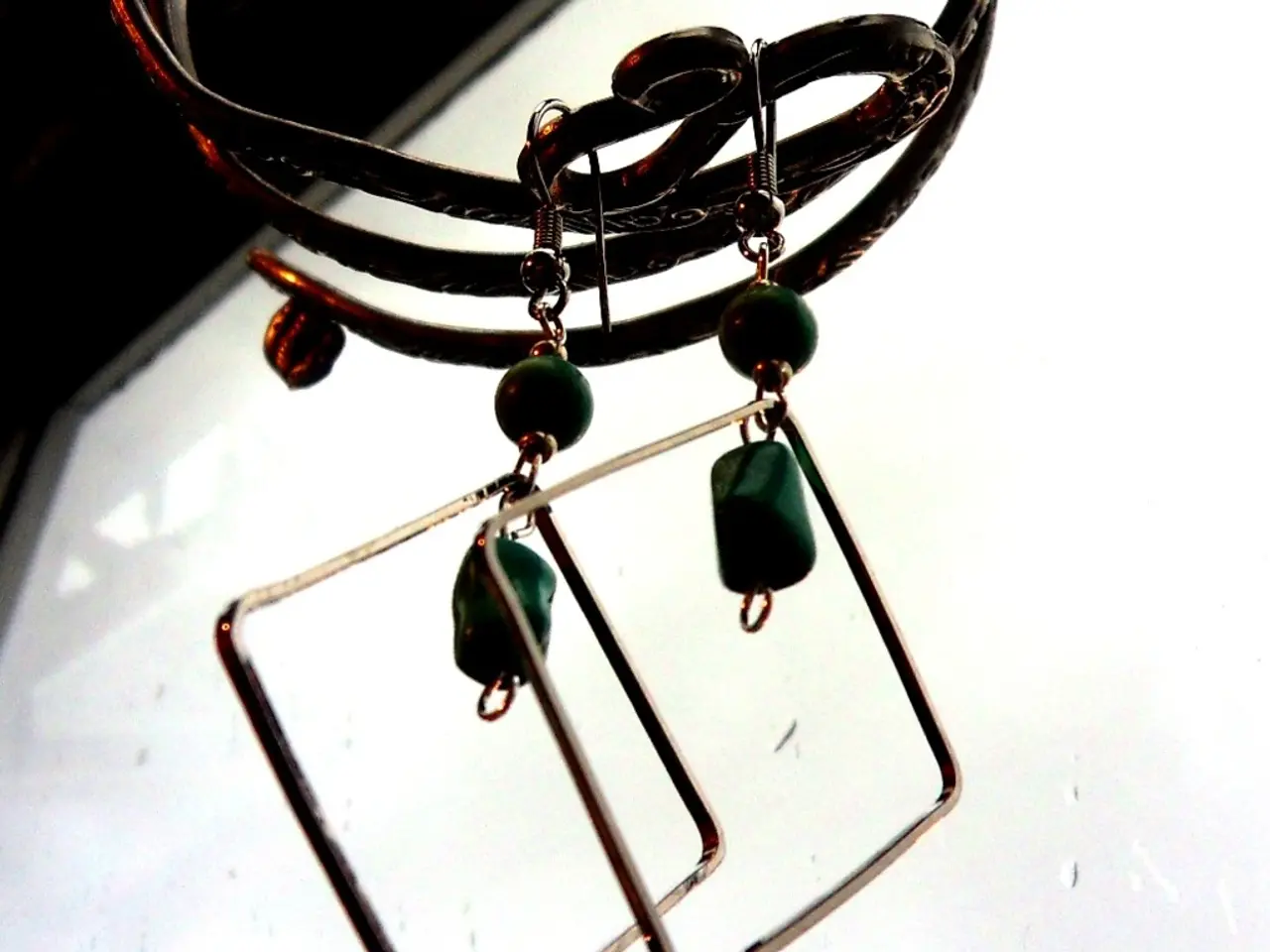Guide for Faceters Using the Dichroscope
Revamped Guide on Scrutinizing Gems with a Dichroscope
Hey there, gem enthusiast! Here, we'll show you how to navigate the captivating world of gemstones using a handy tool called a dichroscope. You can even make your own if you're feeling crafty!
Obtaining Your Dichroscope: The Easy Way
There's no need to head to a mystical lab; you can grab this tool online! You'll find two types: ones with polarizing filters and those with optical-grade calcite. Both work like a charm for scrutinizing gems. DIY fanatics can even fabricate their own instruments.
Swift Gem Distinctions with a Dichroscope
While a dichroscopic test can't definitively identify a gemstone, it's a lifesaver for eliminating possibilities quickly. It's especially useful during gem shows when you can't conduct a thorough examination. This compact tool is a breeze to carry and will save you from potential headaches – and money!
For instance, at gem shows, you might come across ruby and garnet rough mixed together. Since these stones sometimes share a similar red hue and can often be found in the same locations, separating them can be tough (and ruby usually costs a pretty penny). A dichroscope helps you quickly distinguish these stones because garnets – singly refractive and not pleochroic – display only one color, while doubly refractive stones like rubies and tourmalines may exhibit pleochroic colors.
Is This a Garnet? Let's Check!
Consider the rough gemstone pictured below. Through a dichroscope, you'll see two windows; the stone exhibits hot pink in one window but a darker purple/pink in the other. Chances are, this isn't a garnet! If it were, you'd usually see the same color in both windows.
With just this test, you can't positively pinpoint the gemstone. But hey, at least you've ruled out one possibility!
Picturing Pleochroic Gemstone Hues Before Cutting
New to cutting gemstone rough with colors on different axes? The dichroscope is your new best friend! It's an excellent teaching tool for beginners facing pleochroic rough.
Take the green tourmaline shown on the right as an example. When viewed through a dichroscope, this stone exhibits a blue/green axis and an olive green axis. Faceting this stone with the blue/green axis up on the table will yield a vibrant green gemstone. When combined, the blue/green and olive green colors give a good idea of the finished stone's appearance. Give it a shot – unless other factors like design shape or type interfere with the result.
Tooting Your Own Horn with a Dichroscope
Orienting a pleochroic gemstone like a pro? Look through the scope and rotate the rough to pinpoint the axis displaying the strongest color (or your preferred color) and orient the stone accordingly. For instance, if a tourmaline's colors were brown and olive green, you can expect a muddy green stone. You might consider cutting a design that minimizes the poor color "c" axis for a brighter gemstone, like the "Smithsonian Bar."
Pro-tip: Orienting sapphire gemstones is also simplified using this technique! The light should shine over your shoulder. When you spot the best color up, that's the direction you'll want to present through the table of the polished stone.
Frequent Gemstones and Pleochroism
Take a gander at the stone you're scrutinizing through the dichroscope. If it displays just one color, it's likely singly refractive. However, be aware that some gemstones might exhibit pleochroic-like colors due to crystal strain.
Doubly refractive gems can exhibit two colors (dichroism), like rubies and tourmalines, or three colors (trichroism), like andalusites.
- Andalusite - Yes (trichroic)
- Apatite - Yes, weak
- Beryl - Yes, but usually weak
- Chrysoberyl - Yes, but usually weak
- Danburite - Yes, weak
- Diopside - Yes, weak
- Garnet - No (occasionally, a color change garnet may show anomalous pleochroic colors due to anomalous double refraction)
- Iolite - Yes
- Opal - No
- Orthoclase - No
- Peridot - Yes, but very weak
- Quartz - No
- Sapphire - Yes
- Scapolite - Yes
- Spinel - No (I have seen a couple of color change stones that showed anomalous pleochroic colors)
- Sphene - Yes
- Spodumene - Yes
- Tanzanite - Yes
- Tourmaline - Yes
- Topaz - Yes
- Zircon - Yes
Keep in mind that some doubly refractive gems may not show any pleochroic colors. It's essential to remember that some singly refractive gems may display pleochroic-like colors due to crystal strain. Use this information as a general guideline for quick gem separations. Happy gem hunting!
- You can easily purchase a dichroscope online, where it's available with polarizing filters or optical-grade calcite, both of which are effective for gemstone analysis.
- Using a dichroscope, you can quickly differentiate between gemstones that might initially appear similar, such as ruby and garnet, which are both red and often found in the same locations.
- A dichroscope is not only useful during gem shows, but it's also an excellent tool for beginners during the process of cutting gemstone rough, as it helps to illustrate pleochroic colors that might be present on different axes.
- When dealing with pleochroic gemstones like tourmaline or sapphire, a dichroscope is valuable for determining the axis displaying the strongest color, which can aid in the cutting process by ensuring a more desirable gemstone color.




